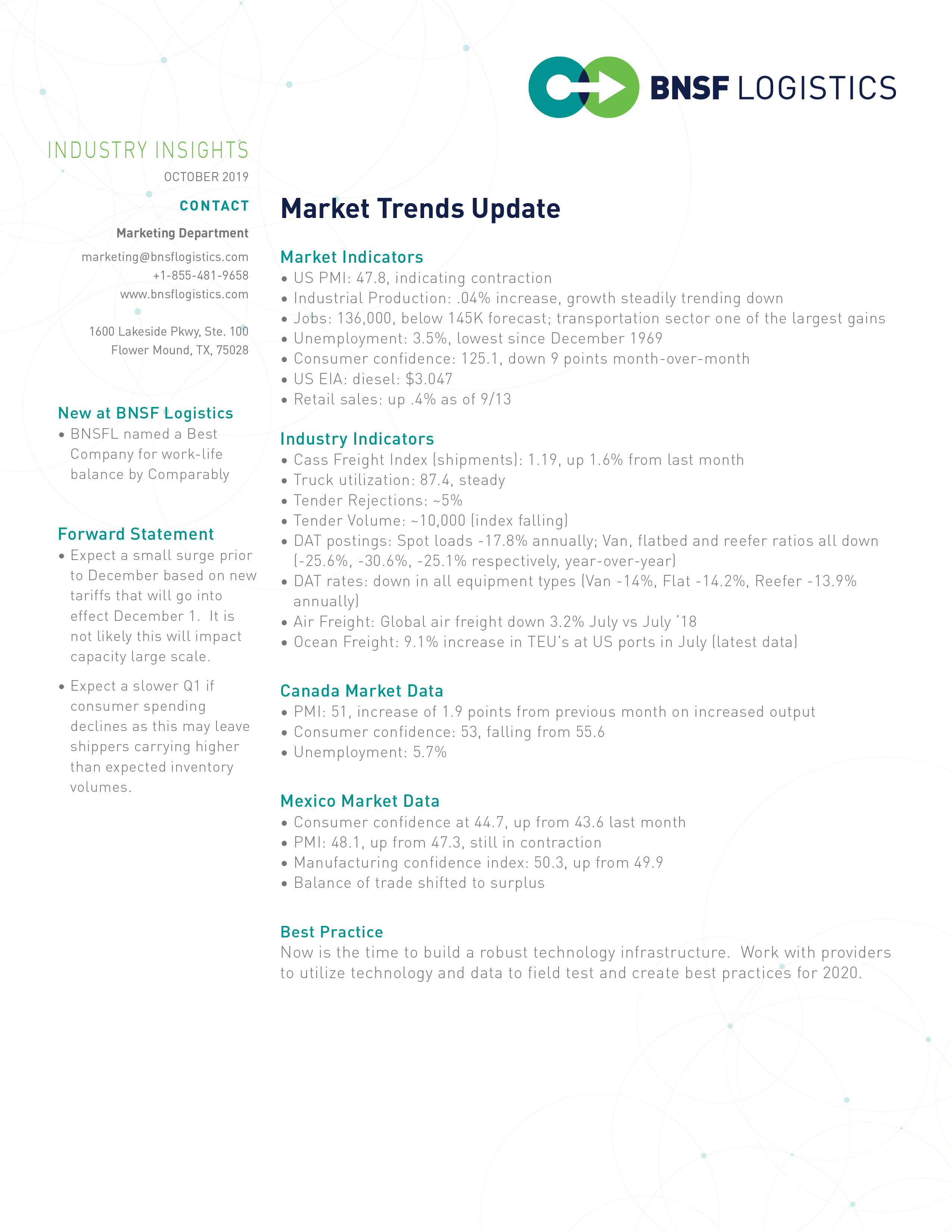 The transportation markets change quickly, and BNSF Logistics wants to be a valuable partner for both our customers and carriers. Jeff Greenwell, Managing Director of Strategic Account Management, is driving this initiative with a monthly look at key market factors that affect the transportation industry. Here’s a little insight into what the most recent numbers mean as we move forward.
The transportation markets change quickly, and BNSF Logistics wants to be a valuable partner for both our customers and carriers. Jeff Greenwell, Managing Director of Strategic Account Management, is driving this initiative with a monthly look at key market factors that affect the transportation industry. Here’s a little insight into what the most recent numbers mean as we move forward.
MARKET INDICATORS | US PMI: 47.8, indicating contraction
We’re seeing that the industry indicators aren’t trending in a positive direction, and a PMI under 50 is troubling.
The Purchasing Managers Index, a survey that goes out to about 400 companies in 5 categories, came in most recently at 47.8. For context, anything over 50 indicates growth and any under 50 indicates contraction. This is the first time in a long time that we’ve seen contraction, and it’s also the steepest drop, month over month, since 2009. Certainly, trade tensions play into this, but what’s also concerning is that this shifts the U.S. from slowing growth, which is what we have been experiencing, to true contraction. The outlook is looking bleaker than it has in the past.
INUSTRY INDICATORS | DAT postings and rates are down
Spot loads and van, flatbed, and reefer ratios (representing the number of loads posted for every truck available) are all down year over year. DAT rates are also down for all equipment types. Rates follow volume. When volume drops, capacity becomes inexpensive and carriers compete for less freight. As there are more trucks out competing for less volume, more providers will exit the industry or rates will plummet and carriers suffer to stay afloat.
FORWARD STATEMENT
Over the last several months, consumer confidence has been a bright spot, but with that index falling, there’s concern for the overall economy. If we see consumer spending continue to fall, we may have an even weaker Q1 2020, as inventories are being pulled forward ahead of new tariffs that will go into effect on December 1st. If those inventories aren’t sold there may not be a need for replenishment (meaning less shipments) as we move into the new year, and shippers will be left carrying higher than expected volumes.






 Blog Home
Blog Home